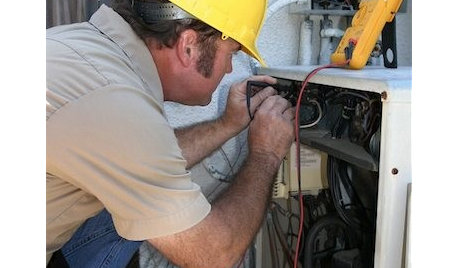Push mower engine issues (power, idle, etc)
woodlumn
12 years ago
Related Stories

LIFEHow to Prepare for and Live With a Power Outage
When electricity loss puts food, water and heat in jeopardy, don't be in the dark about how to stay as safe and comfortable as possible
Full Story
HOME TECHThe Inevitable Future of Drones Around Your Home
As Google joins the push for airborne deliveries, it seems only a matter of time before neighborhoods are buzzing with drones. Is that OK?
Full Story
MOST POPULARWhat Is a Living Building?
Part philosophy, part advocacy, the Living Building Challenge is pushing designers and homeowners to rethink how we live
Full Story
ACCESSORIESEasy Green: Cut Electricity Use With 15 Unplugged Home Devices
Crank up the energy savings, courtesy of household items that come into power the old-fashioned way: manually
Full Story
LIFEHouzz Call: Show Us Your Nutty Home Fixes
If you've masterminded a solution — silly or ingenious — to a home issue, we want to know
Full Story
HOUSEKEEPING10 Problems Your House May Be Trying to Show You
Ignore some of these signs and you may end up with major issues. We tell you which are normal and which are cause for concern
Full Story
KITCHEN DESIGNIs a Kitchen Corner Sink Right for You?
We cover all the angles of the kitchen corner, from savvy storage to traffic issues, so you can make a smart decision about your sink
Full Story
MOVINGHow to Avoid Paying Too Much for a House
Use the power of comps to gauge a home’s affordability and submit the right bid
Full Story
HOMES AROUND THE WORLDThe Kitchen of Tomorrow Is Already Here
A new Houzz survey reveals global kitchen trends with staying power
Full Story
REMODELING GUIDESCan You Handle That Fixer-Upper?
Learn from homeowners who bought into major renovation projects to see if one is right for you
Full StoryMore Discussions







1saxman
woodlumnOriginal Author
Related Professionals
New Mexico Landscape Architects & Landscape Designers · Norton Shores Landscape Architects & Landscape Designers · Redondo Beach Landscape Architects & Landscape Designers · Roosevelt Landscape Architects & Landscape Designers · Westwood Landscape Contractors · Brookline Landscape Contractors · Chattanooga Landscape Contractors · Del Aire Landscape Contractors · Kettering Landscape Contractors · La Vista Landscape Contractors · Mesa Landscape Contractors · Paramount Landscape Contractors · Pomona Landscape Contractors · Hueytown Landscape Contractors · Round Rock Carpenterstomplum
woodlumnOriginal Author
homechicken
baymee
1saxman
woodlumnOriginal Author
baymee
woodlumnOriginal Author